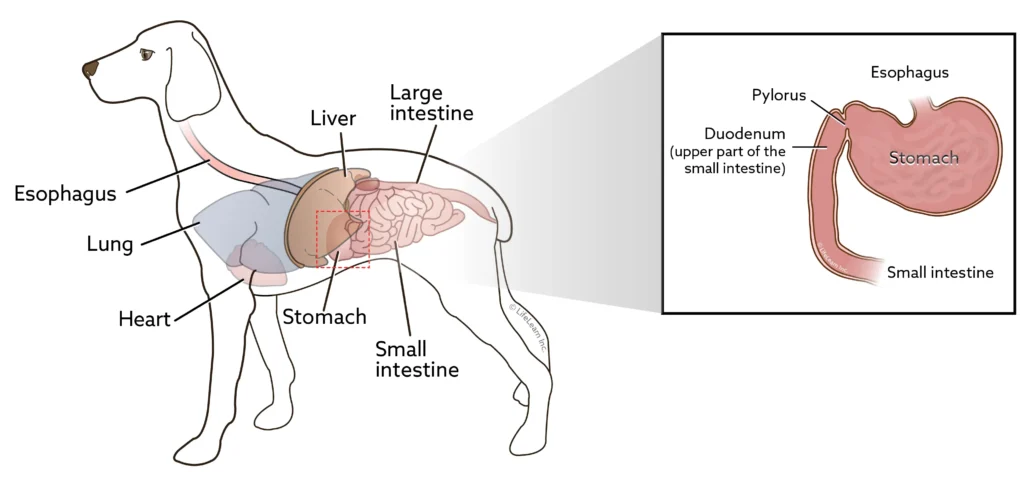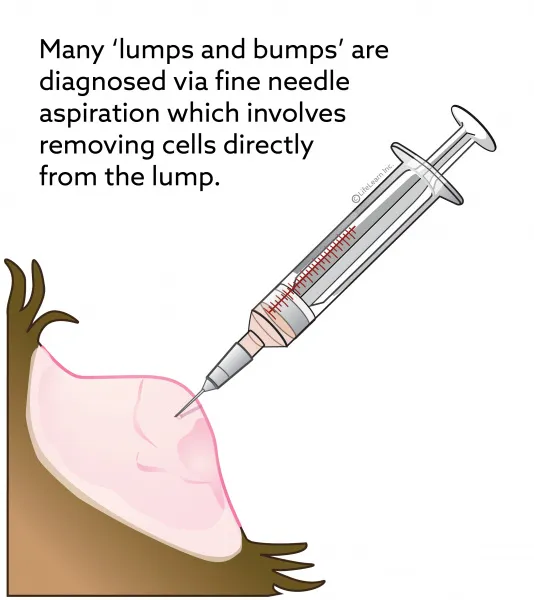Hypercalcemia

The term hypercalcemia is used when the level of calcium in the blood is higher than normal. Calcium levels are controlled by a pair of parathyroid glands. High calcium levels may signal the presence of serious underlying disease including kidney failure, adrenal gland failure, a parathyroid gland tumor, and some types of cancer. Pets with hypercalcemia may show signs of weakness, listlessness, increased drinking and urination, and loss of appetite. Your veterinarian will perform diagnostic tests which may include total calcium, ionized calcium, albumin, and parathyroid hormone levels.
Holter Monitor in Dogs

A Holter monitor is a portable device used to continuously monitor the electrical activity of the heart and can be an effective and non-invasive way to help your veterinarian evaluate heart conditions, especially when trying to determine the cause of fainting episodes or evaluate treatment. Many dogs are not bothered by it and ignore its presence.
Gastrointestinal Endoscopy in Dogs

Gastrointestinal endoscopy uses a flexible tube with a camera or viewing port to inspect the esophagus, stomach, proximal small intestine, or colon for evidence of disease-causing clinical signs characteristic of gastrointestinal disease. Foreign bodies can often be retrieved. Biopsies are taken of abnormal and normal tissue, as not all conditions cause gross changes to the stomach or intestinal surface. The endoscope cannot reach all areas of the small intestine, so other tests may be needed to diagnose disease in these areas. Endoscopic pinch biopsies are not full thickness so if diagnosis is not achieved with endoscopic biopsies, additional testing including surgical biopsies may be needed. 12-18 hours fasting and enemas are required prior to endoscopy depending on the area being studied.
Food Allergies in Dogs

Food allergies can be problematic for many dogs, especially after years on the same diet. Clinical signs may manifest as gastrointestinal or skin problems. Some animal proteins are the most common causes and strict avoidance is the best way to treat affected dogs. An eight to twelve-week elimination diet trial on a special veterinary diet is the only definitive method to diagnose a food allergy and, in some cases, the veterinary diet may need to be continued long-term.
Flow Cytometry

Flow cytometry is a laboratory technique that can be used for counting, examining, and sorting cells. A sample is passed through a light source and as the cells move through the path of the light source, they scatter the light in different ways.
Fine Needle Aspiration (FNA)

Fine needle aspiration is a useful tool to collect samples for cytology and is often used to diagnose abnormal lumps on your pet’s body as well as evaluation of fluid samples and tissue surfaces. It is relatively simple and inexpensive but can provide a lot of information. Depending on results, further tests may be indicated to best help your pet.
Fecal Occult Blood

A fecal occult blood test screens for the presence of hemoglobin (a component of red blood cells) in a fecal sample. Many conditions can cause blood to appear in the stool including intestinal ulceration, neoplasia, dental disease, and parasites.
Fecal Flotation

A fecal flotation is a screening test for internal parasites. It is performed by mixing a small sample of stool with a special solution that causes any parasite eggs to float to the surface of the solution. Young pets need multiple fecal flotations to screen for infection, while adults may only need a fecal screening once yearly unless they are at higher risk of infection.
Fecal Baermann

A fecal Baermann is a special fecal test used to diagnose infection by parasites that pass larvae in stool instead of eggs. A small golf-ball sized sample of fresh stool is mixed with warm water to encourage larvae to separate from the fecal material to allow identification. The most common parasite diagnosed with a fecal Baermann is lungworm, which typically causes signs of coughing.
Electrocardiogram in Dogs

An electrocardiogram (ECG, EKG) is a test that is used to assess the heart. More specifically, an ECG measures the transmission of an electrical impulse through the heart. This test is not painful and is typically performed as an outpatient procedure. Analyzing the electrical impulses produced as the heart beats can help identify a number of different abnormalities within the heart.

